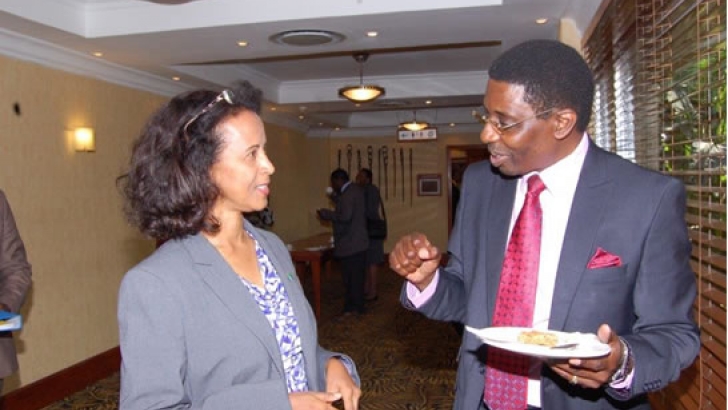
Former Chairperson of the National HIV/AIDS/STI/TB Council (NAC) Bishop Dr Joshua Banda has urged the new crop of board members to increase local financing to support the AIDS response by fully utilizing the law which allows the institution to mobilise resources.
Bishop Banda’s observations come in the backdrop of the heavy external dependence syndrome of the national HIV response at about 86 per cent with locally generated funds estimated at a paltry 14 per cent.
He was speaking at Lusaka’s Southern Sun Hotel during the orientation meeting of new board members under the chairmanship of Dr George Tembo.
“Let the ACT that establishes NAC be your utmost guide. I urge you to be innovative and visionary. Think outside the proverbial ‘box’ in order to find new ways of exploiting local means to increase domestic funding for the national response,” Bishop Banda said.
Bishop Banda also counseled the new leadership of NAC to guide the institution to continuously anchor its HIV and AIDS interventions on evidence for maximum benefits as opposed to pursuing potential externally motivated goals.
He attributed Zambia’s successes in the HIV this far, to the practice of basing its responses on sound research based evidence such as the 2009 HIV Prevention Response and Modes of Transmission (MOT) Analysis which was part of a larger regional United Nations Joint Programme on HIV and AIDS (UNAIDS) effort.
According to the Revised National HIV and AIDS Strategic Framework 2014-2016, over the last two decades, Zambia has scored tremendous achievements in halting and beginning to reverse the effects of the epidemic as evidenced by statistics from the 2007 Zambia Demographic and Health Survey (ZDHS), Modes of Transmission (MOT) study, Health Management Information System (HMIS) and the Joint Mid-Term Review (JMTR.)
Findings further show that there is a decrease in the incidence rate in adults (15+ years) from 1.6% (82, 000) in 2009 to 0.8% (46, 000) in 2012. The rate of infection in children (0–14 years old) has also dropped by up to 51% by 2012. In addition, the number of health facilities dispensing ARVs in Zambia has increased from 509 in 2011 to 564 in 2012. Through these facilities, a total of 580, 118 children and adults are receiving antiretroviral therapy out of the 708, 460 people estimated to be in need of ART. This represents 81.9% coverage.
Bishop Banda commended Government for increasing its annual budgetary allocation to NAC in 2013 to nearly 200 per cent towards strengthening and sustaining its coordination role of the national AIDS agenda.
He noted some of the challenges during his reign as sustenance of a well-motivated and sufficiently skilled human resource cadre at the NAC secretariat as well as at sub-national level which needed significant upward adjustment as well as the ‘merging’ of the AIDS Fund into the Health Fund without a corresponding change in the NAC ACT that provided for establishing the AIDS Fund.
Dr Tembo paid tribute to Bishop Banda for providing insights into the HIV and AIDS sector and sharing information on where energies and focus should be directed. He echoed his predecessor’s counsel on the need to allow evidence to drive HIV programming.
And UNAIDS Country Director Dr Medhin Tsehaiu told the orientation meeting that the focus areas of the Joint Programme of Support from 2016 to 2012 within the UN Sustainable Development Partnership Framework would be on strategic information to enhance expansion and strengthening the evidence base for HIV programming in Zambia, sustainable financing, strengthening civil society and capacity development for service delivery.
The United States Government through the President’s Emergency Plan for AIDS Relief (PEPFAR) tabulated some of the gains registered in Zambia through its support since 2004.
Global Fund Liaison Officer at the American Embassy Ms Bethany Baxter cited these successes as; a drop in the rate of new HIV infections by 58 percent between 2001 and 2011, enrollment of more than 600,000 people on anti-retroviral treatment compared to only 3,500 in 2004, 96 percent of women in Zambia are receiving antenatal care from a skilled health care provider, more than 800,000 men are medically circumcised, reducing their risk of getting HIV by 60 percent, over 2,000,000 people in Zambia are counseled and tested for HIV every year while more than 700,000 orphans and vulnerable children currently receive support.
Speaking at the same function, Network of Zambian People Living with HIV and AIDS (NZP+) Executive Director Ms Eunice Sinyemu said civil society organisations were critical in the overall success of the HIV programmes especially from the demand creation side.
“Without a voice from civil society, many of the gains made in HIV response would not exist. Collective action and leadership exercised by CSOs is a demonstration of the power that CSO have ingenerating transformational change in the HIV response,” said Ms Sinyemu.
Categories:




